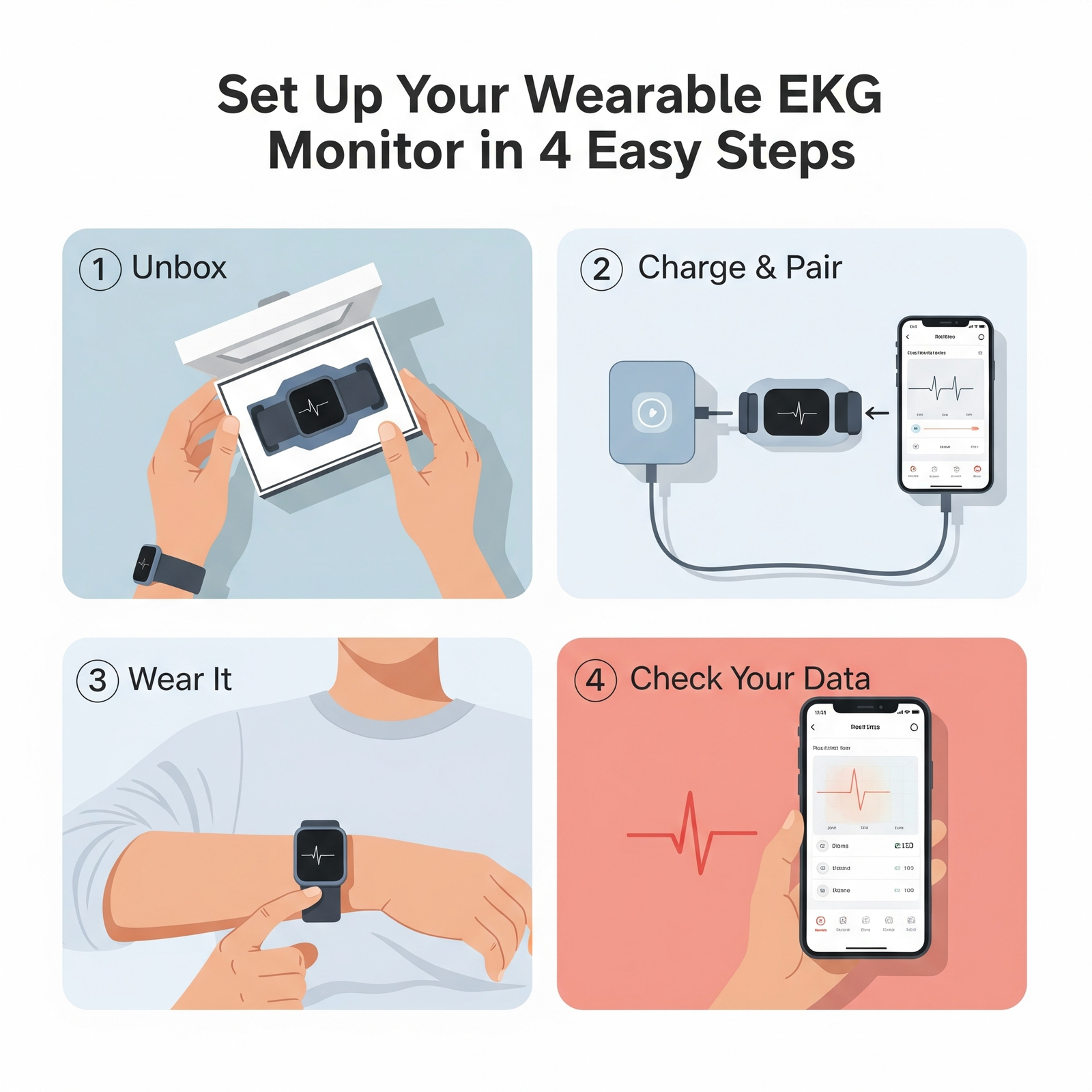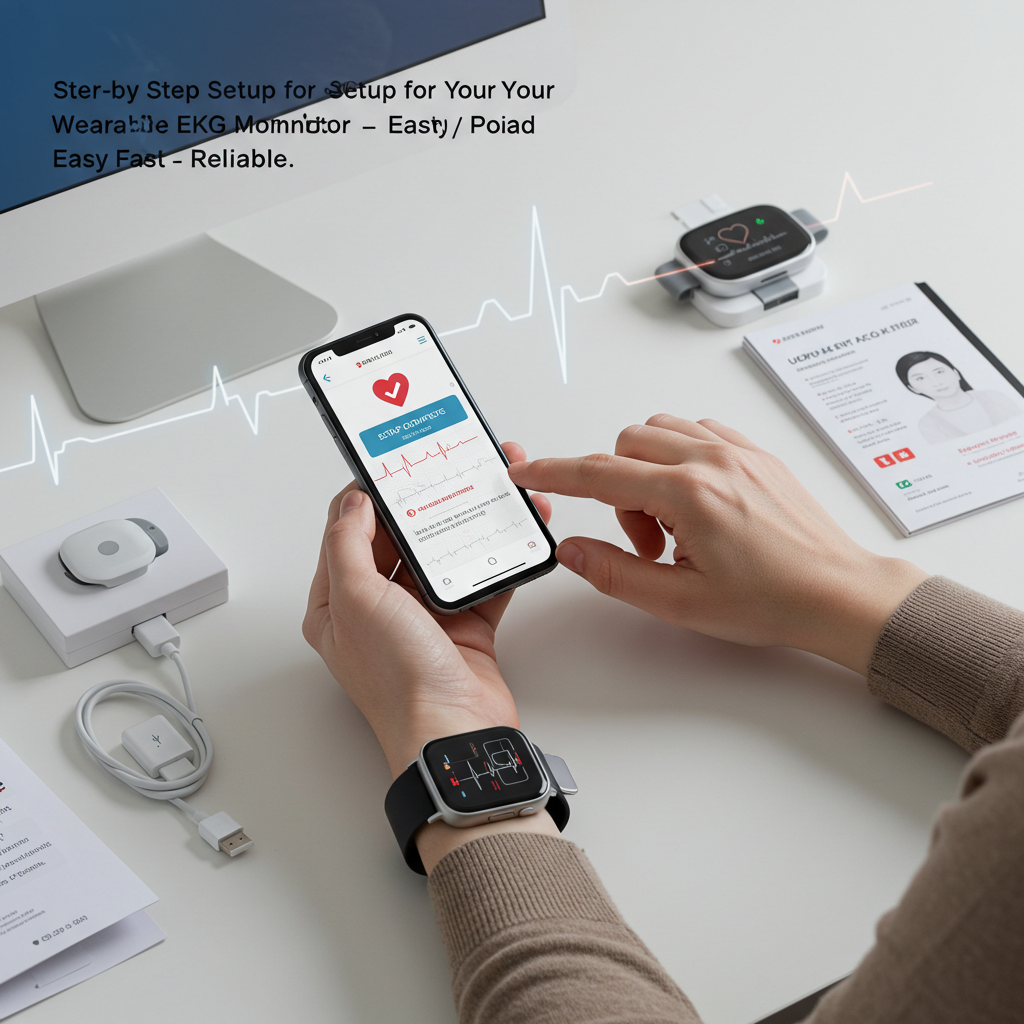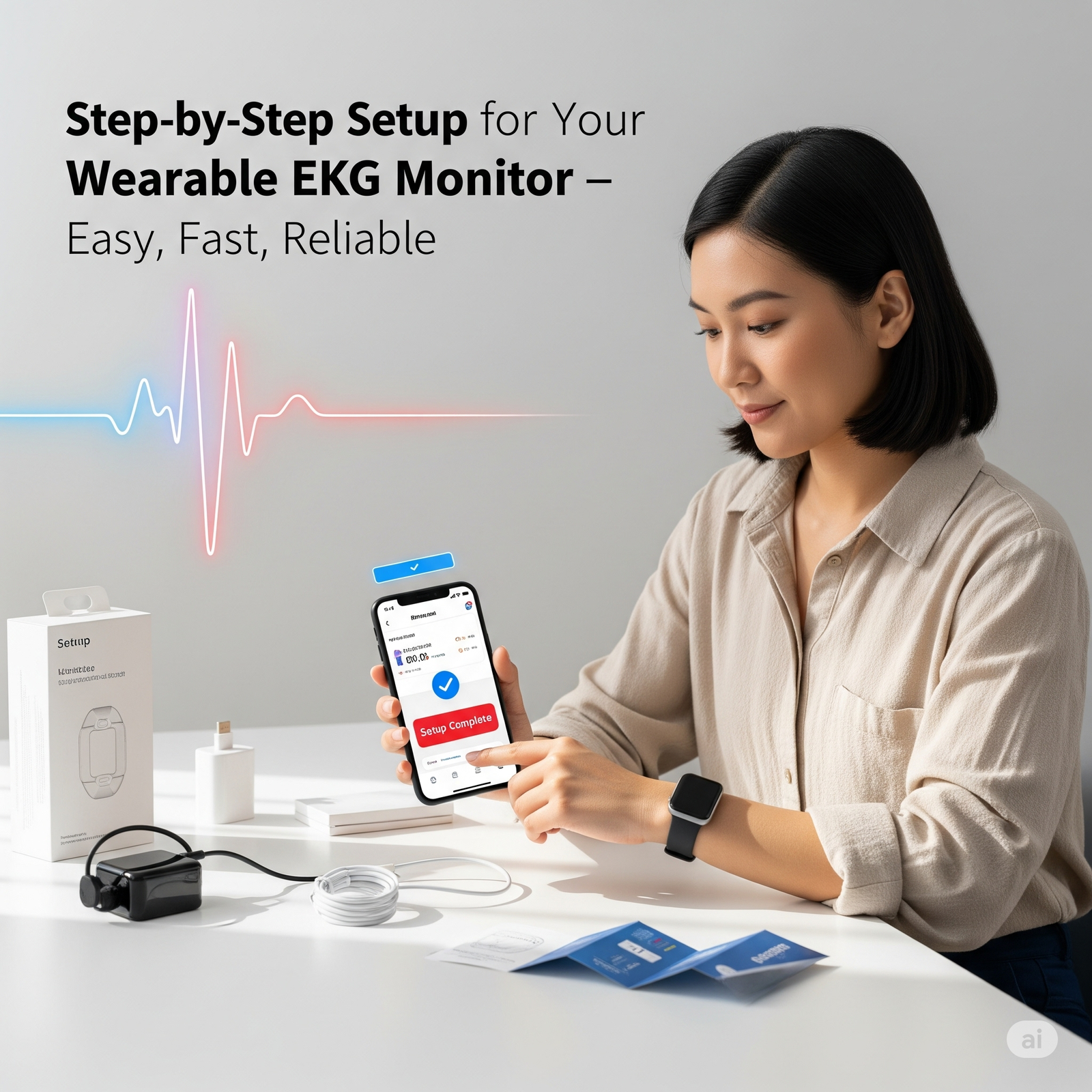Taking control of your heart health starts with awareness, and that’s exactly what an ECG/EKG Monitor empowers you to do. Whether your cardiologist recommended one or you’re taking proactive steps to understand your heart better, this guide will walk you through your very first experience with setting up and using your monitor.
If this is your first experience with these devices, you’re in the right place. Let’s make your introduction to this life-saving technology as smooth as possible.
1. Understanding the Basics: What Does an ECG/EKG Monitor Actually Do?
Before setting it up, it’s necessary to understand what you’re working with. An ECG/EKG Monitor is a medical-grade device that tracks the electrical activity of your heart in real-time. It detects irregularities like arrhythmias, skipped beats, and other electrical disturbances that might not be noticeable otherwise.
Unlike outdated hospital equipment, today’s portable ecg ekg units are compact, user-friendly, and smart enough to sync with your phone or tablet. These advanced heart monitor devices bring critical heart data to your fingertips. There’s no need for wires or hospital visits.
With this core knowledge under your belt, let’s move into selecting the right device for your needs and lifestyle.
2. Picking the Perfect ECG/EKG Monitor: Fit Your Lifestyle, Not Just Your Symptoms
Not all ECG/EKG Monitors are designed the same, and choosing one that suits your routine can make all the difference. Start by considering the features that will support long-term use and easy integration into your daily habits.
Here’s what to look for when choosing the right model:
- Device Compatibility: Make sure it works with your iOS or Android devices so you can review and share data easily.
- Data Storage & Cloud Access: Choose a heart tracking device that store historical readings and allow data export for your physician’s review.
- Battery Efficiency: Long battery life or quick charging ensures the device is ready whenever symptoms arise.
- App Functionality: Some monitors come with apps that provide real-time graphs, summaries, and even AI-driven alerts.
- Medical Validation: Devices approved by the FDA or CE-certified are tested for reliability and clinical accuracy.
Many new users benefit from a home ekg machine with a guided app and clear visual indicators. Once you’ve selected your device, the next step is getting familiar with what’s inside the box.
3. Unboxing and Familiarizing Yourself With the Components
Opening your ECG/EKG Monitor package is exciting, but it’s not the right time to start the recording yet. First, take a moment to identify and understand every component in the box. This will ensure you set it up correctly and avoid any early errors.
Your device package should include:
- The main ECG/EKG unit, either wearable ecg monitor or handheld, depending on the model.
- Charging accessories such as USB cables or dock stations.
- Reusable or disposable electrodes, if your home ekg monitor requires external sensors.
- A detailed user manual, often with visual setup guides and QR codes to app downloads.
- Travel or storage pouch, especially with portable ekg monitors.
This process only takes a few minutes, and most ekg device apps provide walk-throughs for added support. Once charged and connected, you’re ready to apply the device and begin using it properly.
4. Charging and Connecting to Your Smartphone or Tablet
Your ECG/EKG Monitor needs to be fully charged before its first use. While you charge it, install the accompanying app on your phone or tablet using the download link or scanning the QR code in the manual.
To pair your monitor:
- Enable Bluetooth on your smartphone, ensuring the app has the correct permissions.
- Open the app and follow on-screen prompts to connect.
- Create an account, if required, to enable cloud storage and backups.
- Test the sync, usually via a demo scan, to confirm everything’s working correctly.
The Wellue is a great way to start using personal EKG monitors. It’s easy to understand and use, and it gives you a basic way to keep an eye on your heart. Because it’s not too expensive, more people can have access to this kind of monitoring. Now, let’s see how a smartwatch compares.
5. Skin Preparation and Electrode or Device Placement
Accurate results from your ECG/EKG Monitor depend heavily on how well it’s placed on your body. Whether your device uses external electrodes or wrist placement, prepping your skin is essential.
Here’s how to do it effectively:
- Clean the area thoroughly, preferably with soap and water, then dry it completely.
- Avoid lotions, creams, or oils that may interfere with conductivity.
- Place electrodes according to the diagram in your manual—usually on the chest, under the ribs, or on both wrists, depending on the model.
- Ensure snug contact if using wrist-based devices or handheld sensors.
This step is especially important for users of a heart monitor designed for long sessions or overnight wear. Once your monitor is correctly placed, you’re finally ready to capture your first heartbeat.
6. Your First Reading: Recording an ECG/EKG the Right Way
Now comes the moment of recording your first heart rhythm using the ECG/EKG Monitor. It’s simple, yet crucial to do it right for accurate data.
To record your reading:
- Sit or lie in a comfortable position to avoid unnecessary movement.
- Start the reading via the app or device button, as instructed.
- Remain silent, calm, and as still as possible for the duration.
- Watch for on-screen instructions or countdowns during the session.
In 30–60 seconds, most devices will provide a snapshot of your heartbeat. Advanced heart tracer apps will analyze the data and flag any noticeable irregularities immediately.
But what do these results mean? Let’s explore how to interpret your findings next.
7. Decoding the Data: What Your Results Actually Mean
Your ECG/EKG Monitor may present your results in a wave pattern graph, accompanied by basic interpretations. Don’t worry if it looks technical, but you will get understanding gradually.
Here’s what to look for:
What it Does:
- “Normal sinus rhythm” typically means your heart is functioning well.
- “Irregular rhythm detected” may signal arrhythmia or other issues.
- Visual graphs will often highlight unusual peaks, gaps, or rapid sequences.
These insights are valuable, but not diagnostic. Share your results with your doctor, especially if the ekg heart monitor flags consistent abnormalities. Regular review helps create a complete picture of your heart health.

When to Seek Medical Advice Based on Your Readings
While your ECG/EKG Monitor is an incredible tool, it doesn’t replace your cardiologist. Use it to empower, not replace, your medical guidance.
Reach out to your physician immediately if:
- You see repeated readings of irregular rhythms.
- Your device flags warnings or red alerts.
- You feel chest discomfort, shortness of breath, or extreme fatigue during sessions..
A portable ekg monitor helps you catch issues early, but professional interpretation ensures proper care.

Using an ECG/EKG Monitor is a powerful leap toward taking control of your cardiac health. From unboxing and setup to interpreting and sharing your results, every step you take gives you more control, more knowledge, and more peace of mind.
If you’re a first-time user or a newly diagnosed cardiac patient, there’s no better time than now to understand your heart. Unbox your heart tracking monitor, follow these simple steps, and start tracking.


